#what is it with media and subtexting red and blue gays
Text
absolutely wild that out of all the possible ships the NATLA team decides to go all in on Zukka. kaatang and zutara in an all-out twenty year war and they decide yeah. we want the insane queer red and blue weirdos . saw voltron do it and were like YES LETS RECREATE THE QUEERBAIT OF ALL TIME
#this is rlly just voltron 2.0 isn't it#positive#coming from a klance and zukka shipper#it's just so funny#natla#zukka#zukka nation#what is it with media and subtexting red and blue gays#klance#kick#avatar the last airbender#atla#red and blue#ian ousley#dallas liu#voltron#vld
2K notes
·
View notes
Text
Some people seem to think they aren’t canon, but I will simply state that they’re missing the point that they don’t need to explicitly say it.
“”The themes speak for themselves, and make it clear what the intent is. In this actual mini-essay I will actually talk a bit about why focusing on ships being “canon” is wasting the potential of queer representation, in particular reference to Lycoris Recoil.

Lycoris flowers represent a lot of different things, most famous is that red variants symbolize death and final goodbyes. However, of that same species are also a pink variant which symbolize love, passion, and … ahem “feminine beauty”.
There are also yellow and blue variants in other species of Lycoris plants. Yellow represents cheerfulness, courage, and cherishing what you have. While blue represents being calm and dependable, but also freedom.
It hardly gets more on the nose and it’s clear how these apply to the characters and the themes of their arcs. And how the story overall is at the intersection between love and death.
Plus there are literally multiple homages to pieces of media where the characters have been thought of as gay in the story or by audiences. In particular the scene in Stand By Me where the characters kick each other, which the animators made the deliberate choice of copying the overall mannerisms of to draw a direct parallel.
The story is about a hell of a lot more than just a romance, and that is a good thing! I don’t need every piece of representation to be about just romance. And you’d also have to be joking me if you don’t see them using the term “partner” even after retiring from being Lycorises to describe their relationship, as being tongue in cheek about how there is so much media where the characters are obviously but not explicitly queer.
Throughout the show they are constantly making references to other ambiguously queer media, and using common language that is unclear about the exact nature of their relationship. Like, everyone wants their confirmed representation I get it, but could we also not call the show doing the most on the nose and tongue-in-cheek queer coding of their main characters “queer baiting”.
The creators have clearly purposefully evoked when not just directly referencing other media where the characters have been queer coded, or queer audiences have resonated with the experiences of the characters. This isn’t subtext that went nowhere, this is a deliberate choice to code the leads as queer by reclaiming things and phrases that have been used as subtext. And then, this is the important part, actually reframing the context to emphasize when they are doing it.
See no further than the picture below this. “Partner” has a long and storied history of being used ambiguously, because how we use it slots between purely romantic and purely platonic, and can mean either depending on ... that’s right the context.
Now let’s imagine you’re a restaurant employee, two women come in and order drinks. When one of them gets up to pick up their drinks and brags about the other woman being her “partner”, and reiterates the point. Now what sort of meaning can we imply from that context? Because if it was a straight couple, nobody would for a moment doubt that partner is in a romantic context.


Like c’mon people, they aren’t hiding it, but they don’t have to look directly into the camera saying they’re a couple for it to be obvious they aren’t “just besties”.
Also I don’t even have time for going to go over how all the official art that’s come out since, and the fan art by the creators hasn’t been at all shy about showing them being more intimate than you’d expect from “just friends”.

Or that the season ended with them vacationing in Hawaii of all places. Or that the whole show had a rather open ending clearly hoping for more seasons, and this probably isn’t the end of their story together. Or that one of the original writers who was behind the entire idea for the show, and was a lead writer for the screen play has publicly stated on twitter he’d love to make them official, and told fans asking if the show would end up being a yuri show to “stay tuned for future stories“
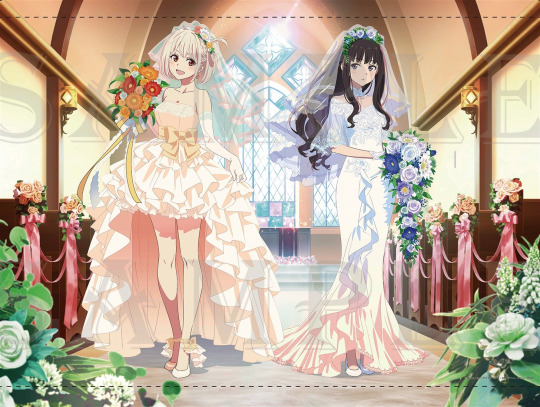
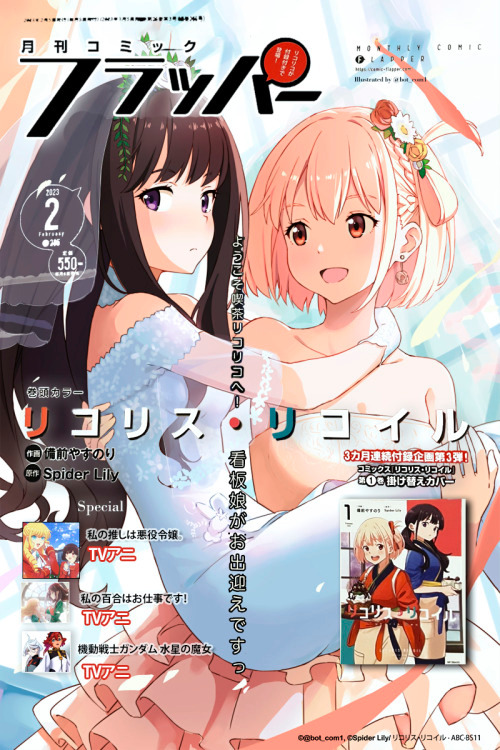
Update: and behold, literally new art and products just got released of them literally in wedding dresses together. It’s more than obvious what exactly their intentions are with these characters. So please, please, understand that queer baiting is not just when a relationship you wanted doesn’t happen on screen.
Queer people don’t only start existing once they’re in a fully intimate relationship. And queer people not ending up together at the end of what will probably be the first of multiple seasons is not the same as queer baiting. Especially not when the creators have clearly taken a lot of time and effort to consistently code them both as queer, in high effort and direct references to other media.
(In a country like Japan where acceptance of queer people is certainly rising, but is also let’s be frank, far from in a good place and there are clear pressures to not show genuinely good representation for fear of upsetting a bunch of weirdos from the publisher’s perspective)
(Yes I know the new Gundam show has lesbians in it, that’s also one of the biggest, most profitable, and longest enduring cross-media franchises in Japan, which is in a lot safer position to risk alienating bigots in their audience than a fully original animated show that didn’t get manga or light-novel deals until after the show was already being released and doing well. And an update since this was posted: the publishers of Gundam literally tried to retcon their queerness. This is my point, if you are expecting a country that hasn’t even legalized gay marriage yet to give you explicit queerness consistently you are barking up the wrong tree. They’ll literally try to walk it back if they think they can make more money off of retconning an explicit gay marriage out, you can’t rely on profit-driven corporations to actually care about making and keeping explicit queer relationships in their media just because it’s the right thing to do)
#lycoris recoil#lycoreco#yuri#they’re gay and in love#they’re lesbians harold#chisato nishikigi#takina inoue#chisato x takina#lesbian#anime
134 notes
·
View notes
Text
Symbols Analysis: Red Hair
Part of the Ava and Deborah Could Be Endgame series where I talk about the evidence of Ava and Deborah’s romantic love story. This is part of my Symbols series where I talk about the various elements that serve their love story. You can read the whole series here on Tumblr or on A03.
What’s this? An essay that I didn’t promise before season 2 and yet the muses forced me to spit this baby out? What can I say, I am Botticelli so taken in by the beauty and mystery of red hair that instead of painting I screeched about gay subtext via my keyboard.
But yes, here’s where I talk about red hair symbolism and I promise to you all I am still working on the symbolism of Deborah’s flannel shirts and the other two last romantic parallels. If how easy it was to write this essay is any indication, hopefully those will come out soon.
Enjoy!
-----------------------------------------------

Because red hair is the rarest hair color in the world (1-2% of the world population), red hair can be quite powerful symbols in art and media.
Artists have used red hair for centuries in their works to “suggest promiscuity, sensuality, deviousness, and—above all—otherness”.
Cultural attitudes towards red hair throughout history have been, to put it mildly, mixed.
“Throughout history, redheads have been feared and revered, loathed and adored, degraded and exalted. No other single human trait has provoked such a dichotomy of emotions in such a large number of fellow humans. It is as boiling is to freezing or despair is to hope. It is as hate is to love.”
Redheads have been associated with witchcraft, sorcery and vampires which lead to a lot of persecution. Plus, there is some mix of other prejudices such as anti-Irish sentiment and anti-Semitism as red hair can be found in Ashkenazi Jewish populations (of which I believe Hannah is a part of).
But on the other hand there’s also a long history of cultural attitudes where red hair is depicted as beautiful and erotic, as exemplified by the famous Birth of Venus by Botticelli where the goddess of love and beauty is depicted with red hair.

“This business of being attracted to the color red is very hardwired into us,” Harvey said. Early humans developed the ability to differentiate between reds, greens, and blues as an evolutionary mechanism to help them (among other things) better forage for ripe, brightly colored fruits in overwhelmingly green forests. “And that’s even before all of the associations with fire, and warmth, and sun, and blood,” Harvey continued. Red is thus a highly visceral color associated with survival, sex, and strong emotion.
On its own Ava having red hair doesn’t have to be significant, but there are 4 key instances in the first season that suggest red hair is significant to the love story between Deborah and Ava.
While the red hair symbolism is more relevant to Deborah’s desires, let’s talk briefly about the symbolism of red hair means for Ava herself.
Ava, Red Hair and Differentness
Ava is a complex character and so in many ways she both lives up to and subverts stereotypes of a red-haired character.
She can be temperamental, passionate, impulsive and a bit wild. Red hair tends to be associated with fire which I’ve mentioned before I see Ava as strongly connected to that element.
The deviousness, while not true of Ava’s character as a whole as she’s not good at lying, is relevant considering the betrayal of Ava sending that email about Deborah. But that has less to do with following stereotypes so much as demonstrating that Ava is a human who is capable of both good and bad actions.
Most redheads are portrayed as either nerdy (mostly men) or hypersexual (mostly women). Ava is both and neither at the same time, subverting the stereotype. She’s not exoticized or hypersexualized. She is a very sexually active and open person, yes, but it never feels fetishistic or like we are meant to view her as a sexual object. Ava’s sexuality exists as one important part of her, but certainly not her only or even her most important trait. Ava is portrayed as pretty uncool, which she admits herself. She’s socially awkward and a little inept, unfashionable and socially isolated. But she’s not nerdy in a traditional sense either. She’s not portrayed as academically gifted, in fact she drops out of college, but she is certainly intelligent. She doesn’t have stereotypical nerdy passions as she’s a comedy writer and she likes to use drugs and party.
As I’ve said before, red hair historically has been associated with witchcraft and sorcery. While there’s no magic portrayed in the show, I have compared Ava to an angel before and that Ava does seem to have magically shown up in Deborah’s life just when she needed her. Ava is also incredibly intuitive and perceptive, which while not magical is certainly deemed a type of feminine knowledge similar to witchcraft. Also, a couple of times we see Ava somewhat predicting events such as Ruby’s breakup with Kelly and even her father’s death. Not a significant correlation, but one that I still thought was interesting.
Ava can also be associated with some of red hair’s positive connotations like passion, fierceness, courage, determination, independence, love, sensuality, and vivaciousness. “Natural red hair is perceived as striking, unusual, and uncommon.” While that idea could be viewed negatively, it also seems to fit Ava in a nutshell. She is the different element coming into Deborah’s life and it’s hard not to be charmed by her (as Deborah is).
I’m not sure if this is intentional, but one comparison you could make in terms of red-haired funny women is, of course, the most iconic of them all: Lucille Ball.

Deborah is more of an analogy for Ball than Ava seeing as how she was a classic TV actress who created and starred in a sitcom with her husband. If you want more information about that comparison I’d recommend checking out @jj-lockd’s video series about Frank and Deborah and Lucy and Desi over on Tik Tok (1, 2, 3). But nevertheless, the red hair certainly gives at least a brief comparison to Ava.
One of the more significant negative associations Ava’s red hair could symbolize is further emphasizing how socially isolated Ava feels.
“The popular stereotypes negatively affect the lives of people with red hair. They often have low self-esteem, experience insecurity, and feel a profound sense of being not only different from other people but also inferior. As implied by the phrase “red-headed stepchild,” people with red hair often feel neglected, mistreated, or unwanted.”
Ava doesn’t feel like she belongs much anywhere: not in Waltham, not in Los Angeles and (as of right now) not in Las Vegas. While her hair is not attributed as the cause of this, it’s still a common trope in stories to have the red-haired person feel out of place.
In modern times there has been a movement to push back against red-haired children being bullied by their peers. It’s not clear that Ava was bullied, but she does say she was “uncool” and clearly friendless in school.
We also just see how desperately Ava wishes someone to take her pain seriously and seems to get rebuffed at every turn, most notably by Kayla and Jimmy. With her bad tweet, Ava gets orchestrated by her professional circle. In episode 3, we also learn that she was dumped by her ex-girlfriend Ruby three months ago. When we meet her mother, Nina, we also see how much her mother dismisses her and her ambitions. The one exception in terms of support is her father who seems quite proud of her, but unfortunately he passes away leaving her without that. I partially read Ava’s entitlement as stemming from her desperate desire to fill the void left behind by anyone really believing in her and her dreams. If no one was going to believe in her, she was going to believe in herself the logic goes.
It’s a basic human need to be loved and appreciated and this is exactly what Deborah offers for Ava. Deborah doesn’t needlessly flatter her (like the British writers do) and she holds her accountable for her bad behavior, but she also listens to her and slowly starts to see and value Ava’s unique perspective and her gifts and show as much belief in her talent as Ava has for her.
One part I see of Ava’s arc is to let go of this desire to be “cool” and to instead follow her genuine desires and values regardless of whether or not it receives external validation. For her to value herself and what she can uniquely contribute and to not see her differentness as negative which could all be encapsulated in her red hair.
And part of why she can do that is because she’s received the love and acceptance she’s been looking for from Deborah.
Many people don’t like red hair and will harshly judge those who have it, but it’s important for her to find someone who loves and admires this trait of hers. Maybe the same person who also seems to admire other “strange” parts of her appearance (*cough* hands *cough*).
Which speaking of…
Deborah’s Desires
Despite Ava being the character with red hair, the symbolism of red hair shows up mostly prominently around Deborah.
Earlier when I referenced the historical mixed cultural feelings of love and hate of red hair, of attraction and repulsion also perfectly encapsulates Deborah’s feelings towards Ava. Throughout much of season 1, Deborah is torn between letting Ava get closer and pushing her away. In one instance she will be turned off by some of Ava’s more abrasive sides but then Ava will surprise her in another, endearing Ava to her.
When we meet Deborah she seems to be trapped in a life that doesn’t seem to quite make sense to her anymore, unable to figure out how to move out of the rut she’s found herself in. She seems to be sleepwalking through her life.
Ava crashes into Deborah’s life and brings back classic things associated with fire and the color red: passion, creativity, determination, sensuality, courage, love and vitality.
But as Ava is paralleled with Frank, we also see that Ava has the potential to also destroy Deborah. To be a wildfire due to her self-destructive habits that could burn Deborah’s life down. She won’t as the point is that Ava will right the wrongs committed by Frank, but the association with red and fire suggests it is possible though. After all, the most powerful and strongest loves need to exist with the possibility of great pain. Deborah will never find a perfect partner who will never hurt her, but needs to find a person who would make the possibility of pain worth it. To realize that the price you pay for walling yourself off from hurt is also to keep yourself from joy and love.
There are 4 key instances of red hair in Deborah’s story that both reflect Deborah’s hidden desires both romantic and sexual, her desire for love and freedom but also how she can combine those desires with a real lasting love and a feeling of home.
We’re going to go in chronological order.
Josefina’s Introduction to Ava
Before Deborah even lays eyes on Ava, Josefina lets Deborah know she has a visitor.
“Deborah, a girl is here from Jimmy, a redhead.”
Now this is the only time I can recall where Ava’s red hair is actually mentioned by anyone. Like a lot of people with red hair, that’s often the first thing people notice about them so it makes sense that to make it clear who she’s talking about, Josefina mentions her hair.
Josefina mentions the redhead part once she sees Deborah’s look of confusion, possibly thinking she needs to jog Deborah’s memory. Of course, she doesn’t know Deborah isn’t aware Jimmy sent Ava against her wishes yet.
Okay great, so what?
Well, this makes me think of another time in which Josefina says something that seems to reflect more on Deborah than what Josefina actually means.
Josefina talking about her niece: “She has plans with her roommate. I don’t think it’s her roommate. I think it’s a girlfriend, but--”
I’ve mentioned before on my Tumblr how this is an interesting thing for Josefina to say in this moment because Ava has been Deborah’s roommate for the past 2 weeks. This conversation holds no relevance later, so you have to wonder why the writers kept this bit in unless the writers are trying to tell us something. Like that there is a possibility that Deborah and Ava being roommates and getting closer isn’t just platonic, there’s a potential for romance there.
So back to the redhead comment. Is Josefina trying to suggest anything here? Like “hey, Deborah, there’s a red-haired girl here. I know how you like those, so brace yourself.” I mean I would love that, but I’m not sure it’s super conscious on Josefina’s part.
Consider the fact that Josefina is Deboah’s house manager which means Josefina knows intimately every part of Deborah’s house which, as talked about by many people before in the fandom including myself, gives you a deep insight into Deborah’s unguarded self.
Which means that Josefina has seen the Plum Brandy painting that sits in between Deborah’s bathroom and bedroom. A painting of a young red-haired woman. A painting of a person that Deborah keeps privately in her bedroom and not advertising to the world. A figure Deborah can see as she goes to sleep.
Let’s talk about her next.
The Plum Brandy painting
This painting is the inspiration for this essay. If you haven’t yet, please go read @lush-retina’s beautiful analysis about this painting.

Edouard Manet - Plum Brandy - 1877
“Plum Brandy is an image Deborah has woken up to for possibly many years, it is an image she walks towards every single morning. It is an image of Ava painted long ago on canvas, and on Deborah's inner eye.
Whether or not she fully grasps the profundity of it, Ava is depicted as an icon of hope, creativity, and intimacy in Deborah's life. Just as Ellen Andrée [the model] was a muse to Manet and many others.”
Plum Brandy follows in the tradition of artists finding inspiration and beauty in women with red hair. As her analysis talks about, the painting can represent many of the associations of red hair with passion, creativity, inspiration and beauty.
While the painting itself doesn’t sexualize the red haired woman (although there have been some interpretations), one could interpret her place in Deborah’s house to have sexual connotations as she lives in between Deborah’s bedroom and bathroom. Two places associated with vulnerability, nakedness and sometimes sexual intimacy. Places that many of us might share with only our lovers.
The Plum Brandy girl is seen as an object of beauty and comfort to Deborah as she is the first thing she sees when she wakes up and the last thing she sees before she goes to sleep, almost like a lover. She gently watches over Deborah. Considering she is buried deep in Deborah’s house where few will get to see her suggests she has a private meaning to Deborah, not one which Deborah would like to advertise to the rest of the world.
As lush-retina nicely put it, if Deborah's house (according to the set designer) is symbolic of Deborah herself like a rose (there’s layers)-a red rose, if you will, furthering the romantic connotations- then that location in her house could be considered the pistil of the rose, the female reproductive part of the flower. And again the fact that it’s associated with the painting of a woman heavily suggests Deborah’s queer sexual desires and that Ava is Deborah’s romantic and sexual fantasy come to life.
The real-life doppelganger of the Plum Brandy girl, Deborah has barred from entering her bedroom. A possible reading could be that Deborah isn’t quite ready for her private fantasy and the reality of getting what she secretly desires to collide quite yet. The possibility of humiliation, pain and confronting her long-repressed desires is too much for her to handle at this moment. For now, Deborah is comfortable with her painted doppelganger and letting her voice in via calling her, but likely soon she will crave more closeness and letting Ava cross more intimate boundaries.
To sum up: the Plum Brandy girl represents Deborah’s romantic and sexual desires that she hides deep within her heart. Her red hair is meant to represent what Deborah most wants in her life: passion, creativity, love, courage and warmth, like a nice fire or the warmth of the sun. Ava is the person who brings all of this into her life and the painting represents how long Deborah has been yearning for Ava to find her.
In the Waves painting
While having the time of her life blackmailing Marty, Deborah lays down in a bed that features a painting of a naked red-haired woman on it.


This painting is called In the Waves. It was created by Paul Gauguin.
From what I can gather from interpretations I’ve watched, the painting is meant to represent a desire to leave civilization in order to enter a more primitive, instinctual existence. The woman is throwing herself into the sea and therefore embracing nature instead of societal expectations.
The painting can be interpreted in a couple of different ways. She could be throwing herself into the sea in despair and muffling her mouth in anguish. That’s a very sad interpretation considering there’s a connection between Ava and death and suicide.
But the painting is placed in a bedroom, so let’s just assume there’s a sexier interpretation of it.
Ivy, Ava’s parallel, is the one who bought this painting and put it in this bedroom. This is likely a spare bedroom considering how minimally it’s decorated, so in a way distancing from Marty’s bedroom and Deborah being associated with Marty’s private space in this moment. Even then, still bedrooms are associated with intimate and vulnerable acts like sleeping and sex. You could interpret the woman in the painting muffling her mouth as trying to stifle her cries of pleasure.
Water is a widely used symbol for the subconscious which houses our deepest desires. Deborah being near the painting symbolizes Deb choosing to forget societal expectations and enter into an existence where she follows her natural desires. Following her very gay desires with Ava.
However, one problem is that we later learn at the end of the episode that Ava can’t swim. One way to read this is that Ava can’t survive for long just being a desire in Deborah’s subconscious mind. She has to bring her to the surface in order for any of this to be realized.
In this scene, Deborah is getting her revenge on Marty screwing her out of her dates. She’s hitting him hard in a couple of ways and one way that’s more speculation based on this painting.
She’s taking advantage of his young and naive partner by persuading her to go against Marty’s wishes and show her the house. In a way, this is payback for Marty constantly dismissing her as a potential partner he’ll show off in public because of her age. She takes advantage of Ivy’s naivety, desire for recognition, her and Marty’s weak bond and being easily impressionable. But more importantly, Deborah uses this to potentially screw over Marty financially (what he cares about most, let’s be real) by blackmailing him about his alimony payments.
But of course, we know none of these schemes end up making a lasting impression on Marty. In their toxic relationship of one upping each other, Marty more or less comes out unscathed. Deborah is the one who suffers the most. She gets humiliated, harassed, assaulted, her career taken out of her control, belittled and left alone as Marty has no trouble finding another partner while Deborah struggles to find romantic and sexual fulfillment.
But there is one potential way Deborah can finally break free of this toxic dynamic and get her revenge in the best possible way for her.
The sweetest revenge Deborah could ever get on Marty is to enter into a happy romantic relationship with Ava. One where, unlike with him, she is supported and loved unconditionally, and she is sexually satisfied. And whether or not he’s pissed about it hardly matters, as Deborah is too happy to care.
So in this scene Deborah uses the parallel!Ava (Ivy) to take pictures of her enjoying being in bed with painted!Ava and that’s just absolutely delightful. It’s as if Deb is preemptively rubbing it in Marty’s face and I believe we should support that journey for her.
Marty is the kind of man Deborah thinks she should be with. If the painting is talking about bucking societal expectations, then Marty represents the toxic heteronormativity that has made Deborah so miserable.
Ava represents freedom from those expectations. She represents Deborah following what she truly wants both as an artist and in her personal life. Following the idea of what red hair represents, Deborah is embracing more wildness, embracing differentness, and diving into a love so powerful and passionate it’s like a wave.
Aidan

Wait, wouldn’t this say more about DJ because he is her partner?
Well, remember that everything in this show is about Ava and Deborah (at least to some extent) so even this really says more about Deborah.
First of all, I see DJ and Aidan as actually a romantic parallel to Deborah and Ava. Same first initials (DJ’s full name is even Deborah Junior) and same hair colors.
But the other thing I find interesting is the idea that DJ and Deborah aren’t nearly as different as they think they are and how DJ’s choice of partner of Aidan could reflect that.
Despite seeming to struggle to understand each other, DJ and Deborah actually have a quite a lot in common. They’re both creative, passionate, aggressive, fierce, they share a love of the dramatic and being the center of attention, and despite what Deborah says they share some taste in style (e.g. DJ desiring Deborah’s tennis bracelet).
They also, I would argue, have a similar taste in the type of partner they would like.
Aidan and Ava are both comfortable with letting their partners be more of the center of attention and they are unconditionally loving and supportive.
And, of course, they both have red hair. Which I feel like isn’t an accident considering they are the only two red-haired people in the cast.
We don’t know a ton about Aidan but a few things we do know is how much he means to DJ (“Ava, this is the love of my life”), how much he loves DJ, we know he’s a boxer so association with blood and vitality and we know has some history of not taking care of himself and/or self-destructive habits, similar to Ava and like a fire burning out of control (“Before you, I didn’t care what happened to me in the cage. But now, I gotta be careful. Because I can’t risk anything that would ruin the life we’re gonna build together.”).
We don’t know if DJ has always had a thing for red-haired men, but let’s just imagine that’s true.
I have no idea whether sexual attraction is genetic or not. Could relatives find the same traits in partners attractive? Honestly, I don’t know, I’m not a scientist. But luckily, this isn’t about science but a story and stories can create these parallels to signal something to the audience.
If we take it true that the Plum Brandy girl represents Deborah’s romantic and sexual fantasy, then Deborah shares DJ’s love of red hair except for the opposite gender and she desires the same person who will be comforting, reliable and the love of her life in the same way Aidan is for DJ.
Conclusion
While looking at all of these instances of red hair, overwhelmingly the evidence is about how Deborah doesn’t just see Ava as inspirational and a source of courage for her, but also that she is an object of beauty and desire for her.
While red hair can symbolize how Ava might feel othered, same with how Deborah feels about Ava’s hands, what makes Ava different is desirable to Deborah. Not only does she accept it, but she is turned on by it.
Deborah makes fun of many parts of Ava’s body, but all the parts she makes fun of are also traits that people tend to list as what they find most attractive: hands, lips, legs, breasts and, of course, hair. And you’ll notice that Deborah only makes fun of the cut of her hair, not the color of it. The Plum Brandy reveals that Deborah loves red hair.
I feel just like how cultural attitudes reveal both adulation and repulsion for red hair, Deborah struggles with fighting between her private desires for a romantic and sexual relationship with a woman and the social stigma she’ll face to those who are disgusted by that choice and dislike it for being outside of what they consider normal.
(Disclaimer: Just want to be clear here I’m not saying being discriminated based on red hair is the same thing as being discriminated for being queer. I’m just making an analogy.)
But for both of their characters, part of their story is about embracing their desires and values even if they aren’t understood, as it’s enough that they accept, love and see each other.
What I hope for Deborah, as this symbol is most attached to her, is that she embraces its call for passion, love, courage, non-conformity and vitality and to let her desire and love for that finally be allowed into the light.
#hacks hbo#hbo hacks#hacks#hacks thoughts#ava and deb could be endgame#deborah vance#ava daniels#deborah x ava#ava x deborah#avorah#avadeb
18 notes
·
View notes
Text
Queering KH Part 4: Hearts in Tune
Actually KH Finally lol

Pictured: Riku humming Sora’s name in a soft, adoring, wistful voice the way a swooning straight person sighs the name of their beloved of the opposite gender.
Kingdom Hearts gives off so many subtextual signals of queer coding that it genuinely BAFFLES me how people can really believe it is straight. You may be wondering what makes me so confident in that when there has not been anything in the games to explicitly prove any of the characters are not straight, and I will be happy to tell you. It is because in order to believe Kingdom Hearts is straight, you have to ignore WAY too much subtext. To truly believe that Sora is in love with Kairi and only coded to be interested in Kairi, you have to ignore his questioning of what love is. You have to ignore the combined keyblade he shares with Riku. You have to ignore how much the narrative is driving him to understand that Riku is his most important, cherished person. This all goes doubly for Riku who has a coming out story not unlike Elsa’s metaphorical one, in which his love for Sora is his greatest source of strength. You have to pretend the necklace gifting plot point is entirely straight and cannot possibly mean anything homoromantic. You have to ignore the way Sora cries while clutching Riku’s hand compared to his subdued and non-emotional reunion with Kairi- that’s just too much “accidental subtext” for me to confidently ignore lol. Intentional or not, KH is Gay~
Here’s how we’re gonna do this.
So where the hell do I even begin with coding KH? Well- I can’t possibly queer the whole of KH text in 1 summer, so what I plan to do is this:
Give you the tools to understand KH’s coding so that you can code it yourself~
Queer a few major KH scenes so that everyone can see that the proof is in the pudding.
I’m gonna try to break down various scenes to decode them and queer them so you can see what’s at play in KH. Originally when this meta was a single doc, I was only gonna cover 4 scenes. But since I’m breaking it into parts to update at my leisure, I’m gonna just add scenes and meta as I go~
Now without further ado:
How the Hearts in Tune scene is Gay Coded
This shouldn’t be too hard at all.~

This scene is almost too easy.
The scene opens with Sora bringing Mickey the sound idea he found but as it turns out, one sound idea is not enough. Sora tells us not to worry because he has a friend who is always picking up the slack for him. Likewise, on Riku’s end, he brings his sound idea to Mickey and is surprised to see that Sora’s sound idea is necessary to complete the song.
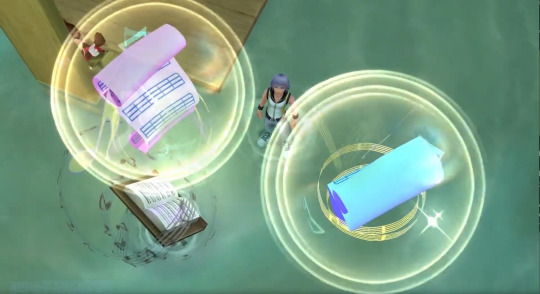
Once the sound ideas meet, this beautiful visual plays out in which the 2 sound ideas swirl around each other and the soundtrack title “Dearly Beloved” plays.
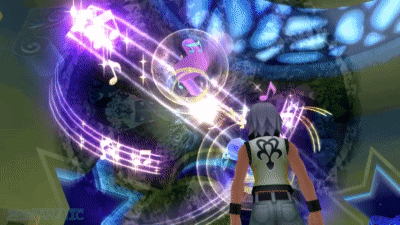
Now, there are several things I want to note about this sequence- heck this visual alone before we move on.
Recall earlier when I discussed Shiki’s point that blue and pink (likewise blue and red) “go together”, romantically.

I will let the visual of Sora’s sheet music being pink while Riku’s is blue speak for itself. But I will also add how this ties into the yin and yang themes I’m about to discuss:
Yin and Yang
This concept gets its own section because it’s such an influential concept in so many aspects of various cultures around the globe.
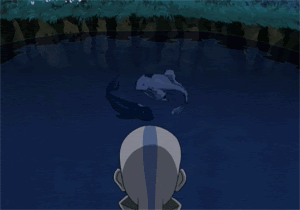
Yin and Yang is an eastern philosophy which illustrates the concept of dualism. In short, it is the concept that 2 opposite halves are complements to a whole. The original term in fact translates to dark-bright.
I am neither a philosophy professor or student so I will keep this as brief as I can and simply encourage you to study up on Yin and Yang at your own leisure. I will however paste this section from wikipedia because I think it is extremely helpful information to have for studying eastern media in general.
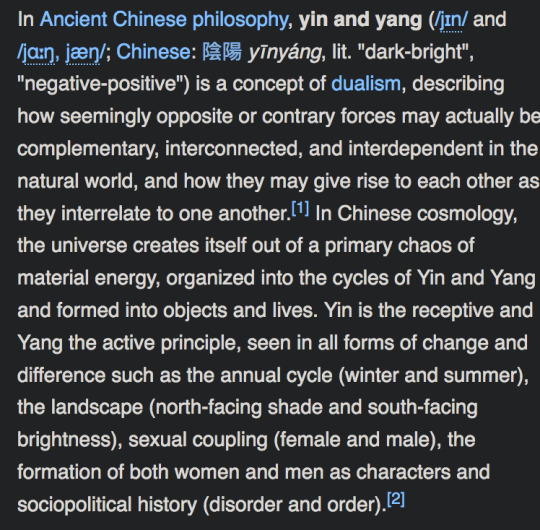
Yin and Yang: husbanded opposing forces. Dark-Light, Moon-Sun, Chaos-Order, Winter-Summer, Negative-Positive.
Female (Yin)-Male (Yang): Yes this is often used in a heteronormative heterosexual context because people are homophobic and believe in gender binaries, unfortunately, but I implore you to consider the concept in more figurative, spiritual, aesthetic themes, especially since Yin and Yang is a much grander philosophy than mere sexuality discourse; it’s about complementary forces creating a whole.
For shipping purposes, think opposites attract. Think concepts that are traditionally associated with femininity meshing with concepts that are traditionally associated with masculinity. Queer media has a wonderful way of subverting heteronormative Yin and Yang tropes by showing that cis-hetero standards can be hypocritically non-compliant with the complementary concept.
Rather than thinking of this, 2 heteros in love based on being just- the same person with opposite genders:
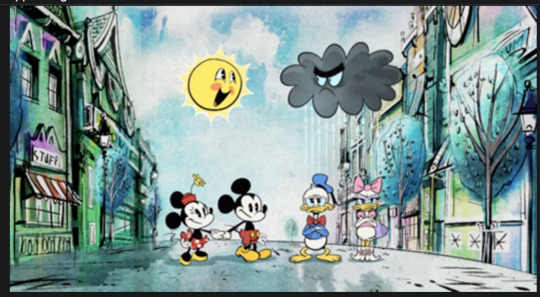

Think of this, same gendered couples with complementary personalities:
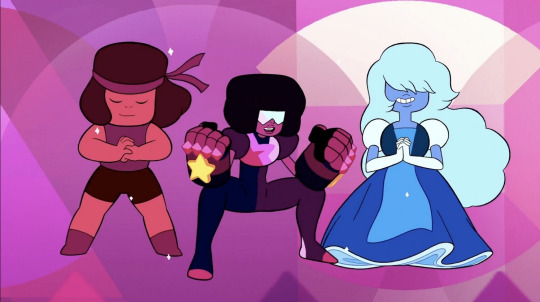
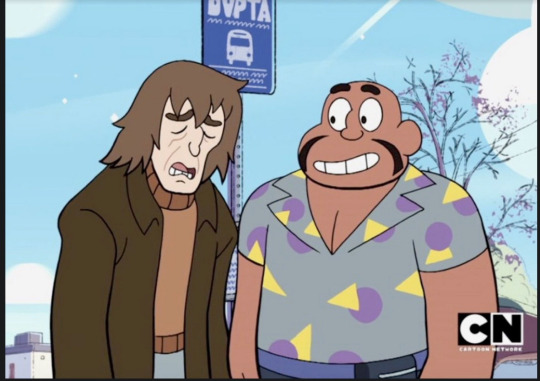
Think about how an aloof scrappy butchy vampire queen attracts an uptight calculating femme princess.

Think about how this goody-goody dumb jock with a martyring hero complex attracts this naughty cunning jock with a self-loathing villaness complex.
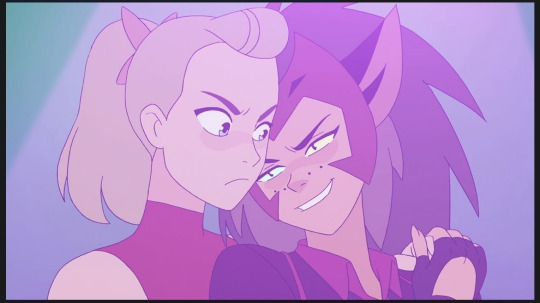
And now think about how badly we need more canonical mlm couples in children’s media lol. Oops my finger slipped. But I’m getting ahead of myself lol.
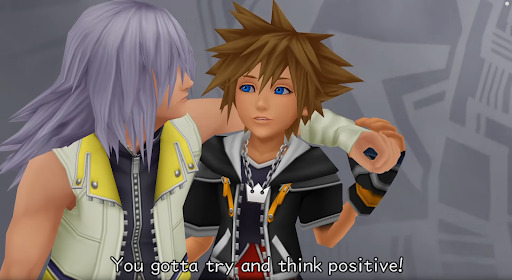
The concepts of interconnected opposite forces are so important and prominent in literature throughout the world, but yin and yang is ESPECIALLY important in Kingdom Hearts because it is a story that explicitly explores Light and Dark forces. It explores how they both oppose one another in catastrophic ways,

and how they complement each other in harmonious ways.

Getting ahead of myself again… But hey speaking of harmony, back to the matter at hand.
Hearts in Tune.

This scene shows a number of romantic symbols. As I was saying before the yin and yang tangent, pink and blue (nee red and blue) are already symbols of romantic suggestion. And in the case of them representing 2 parts of a whole song, these song pieces act as complementary halves, adding another layer of dualism to the scene. Furthermore, the music sheets swirl around each other in a yin and yang fashion. Harmony has been achieved. This lets us know these forces belong together. These forces representing Sora and Riku. They are husbanded together. These 2 hearts in question are part of each other. In fact, Mickey even says so:

Perhaps most damning, however, is that the song in question is “Dearly Beloved”, arguably the theme song for Kingdom Hearts as far as the score goes. I’m sure it goes without say that “Dearly Beloved” is not only in itself a romantic sounding phrase but it is also the phrase specifically said by officiators of weddings to the congregation before the wedding vows are exchanged. “Dearly Beloved, we are gathered here today…”
I will also mention that Riku’s dream eater symbol visible in the shot is specifically designed based on a bleeding heart flower, a symbol of passionate love. Credit to Steam for pointing this out here, please follow them and read their posts they are magically delicious:
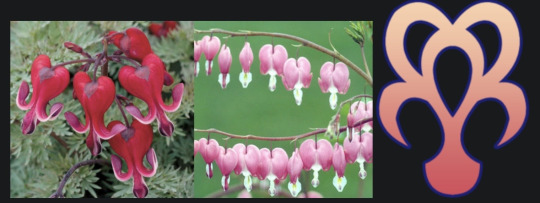
So almost everything about this scene is aesthetically romantically coded, and I didn’t even mention the fact that Dream Drop Distance’s whole color palette is themed with rainbows, which as I said earlier is absolutely still a gay symbol in Japan. Note the rainbow of colors animating from the sheet music.

So in terms of the atmosphere of the scene, its already incredibly homoromantic in every way I can think of. But what about the dialogue?
Well lets talk about the dialogue. Dialogue should always been read with care when you’re trying to queer a text. Often a lot of queer messaging in a text is subtextual. This means the text itself may actually say something gay, but you have to read further into it. This is an old method of queer writing designed to protect the writer from getting in trouble for their gay crimes.
Historical aside on this: If you’ve ever read Oscar Wilde’s “The Picture of Dorian Gray”, you may have note that Lord Henry can never just simply say that he is gay, lest Oscar Wilde be charged for homosexuality in 19th century England. Instead, Lord Henry simply tells us he is married to a woman, but makes it clear throughout the text that this marriage is mostly performative and he is not emotionally invested in it whatsoever, going against the puritanical, heternormative ideals of Victorian prudery. Lord Henry is by contrast MUCH more invested in following the life and times of his very close friend Dorian Gray, with whom he shares a hedonistic philosophy in the name of Fin de siècle. Not to be a downer but for the sake of understanding how real this subject of oppressed gay censorship is, despite keeping the homosexual themes as purely subtext, Oscar Wilde was tried and convicted of homosexuality and this book was used against him in court.
What we are privileged to have today with KH is a cutscene and not just a script. Meaning we have visuals, animation, voice acting, musical cues, etc etc to follow along with to enhance our subtext.
On Sora’s end of the conversation, Mickey points out that the song is incomplete with just his sound idea alone, and Sora tells him not to worry, as Riku is his dependable friend who will fill in where he fails. The text in the official English translation is:
Mickey: That's strange... Is one Sound Idea not enough?
Sora: Don't worry. I've got a friend out there who will help. He's always
picking up the slack for me.
This on its own sounds platonic. But note just how affectionate Sora’s voice acting is when he says it. Not only that, he clutches his heart to let us know how close he is to Riku and how much his connection with Riku matters to him. How much confidence he has in this friend he cares so much about. He then closes his eyes after saying it, smiling up in the air blissfully while he waits for their hearts to make their connection and finish the song.
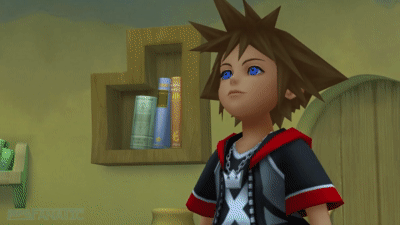
Once it is finished, Mickey remarks that their sounds joined together to make something more powerful. Sora then says looking thoughtful, “Yeah. Two forces are better than one. Right, Riku?”

Following this, Sora leaves to fight the boss.
On Riku’s side, Mickey questions what happened, and Riku looks up thoughtfully, and says tenderly, “Sora.”

Mickey comments “Sora? Funny... Just hearing that name kinda makes me wanna smile.” and Riku tells him warmly, “Yeah. That's how he is.”
Mickey then goes on to say some really shippy stuff:
“Whaddaya know... Riku and Sora. The Sound Ideas you two set free joined together. And when they did, they made a great and powerful harmony.”
Riku then nods and tells Mickey brightly that “Sora can find the brightest part of anything, and pull off miracles like there's nothing to it. It's pretty hard not to smile around him.”
And I would like to pause to look at that line. “It’s pretty hard not to smile around him.” Although Mickey says the same thing, that just hearing Sora’s name invokes a smile, we sense a somewhat deeper meaning in Riku saying it. Why is that? Well, for one thing this game is entirely about Riku protecting Sora and exploring how much Sora actually means to him. This game is continuing Riku’s redemption arc from KH2, but it is also doing something perhaps even more important: it is providing him a journey of self discovery. This test resets Sora and Riku to level 1 so to speak, not just in their powers but even their models revert to variations of their KH1 selves. This helps to underscore Riku re-examining himself and his feelings.
And then guess what? Mickey makes some even SHIPPIER commentary. He exclaims “Wow! No wonder the music sounded like so much fun. But I bet he's got you to thank for that. Having such a good friend means he could really enjoy it.”
Riku is taken aback by this comment. “Huh?”
Mickey continues, expressing some extremely yin and yang themed sentiments,
“It's like each of you is holding on to a little part of the other. Your hearts are always in tune, so they're free to sing. Gosh, I hope I can be part of the team someday.”
Mickey did us a wonderful favor and expressed to us explicitly, for those who didn’t understand the romantic coding of the scene already, that Sora and Riku are a good match. Mickey tells Riku that the music sounded like fun in English, that it was a happy, pleasurable time, and tells him that Sora has Riku for a friend which is what must have made it so enjoyable.
So from this dialogue we get assurance that Sora and Riku are two very close friends, whose hearts are connected, and they are 2 powerful forces that merge into an even greater one. Their hearts are in tune.
Now if this were a scene about a boy and a girl, I doubt anyone would question whether it was romantic. Why should we be asked to look at it platonically just because it is 2 boys? The romantic imagery is clear.
And let me ask you this while we’re still on the subject of Dream Drop Distance:
According to Riku’s character files, he had previously thought of Sora as a little brother, and tried to be a cool older brother to him.
He then tells us that this has changed. What did it change to?
The surface level, heteronormative answer would say it changed to them being merely friends.
But isn’t that an odd regression? After all, found family is a thing, and that’s a bit weird for him to question since there is no reason for those feelings to change on that notion. If Sora loved him like a brother, that clearly hasn’t changed. Riku clearly loves Sora as deeply, so that didn’t change. The other problem with this phenomenon Riku is dealing with is that there is no reason for him to feel this strange sense of repression we keep seeing over this change. He is constantly holding back on some feelings for Sora but platonic and brotherly feelings are entirely acceptable. What is it that he is hiding? What sort of feelings for Sora would be hidden?
From the Kh2 Novel:
He really did want to see Sora and talk. But that was impossible with this appearance. The things that mattered the most were what he couldn’t tell Sora. It had always been that way.
What sort of feelings might be systemically oppressed?

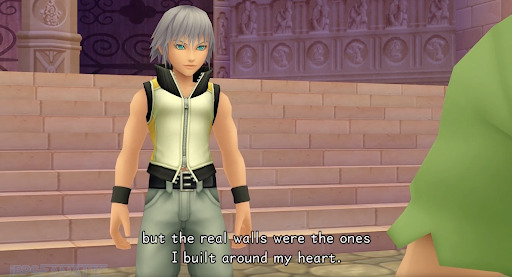
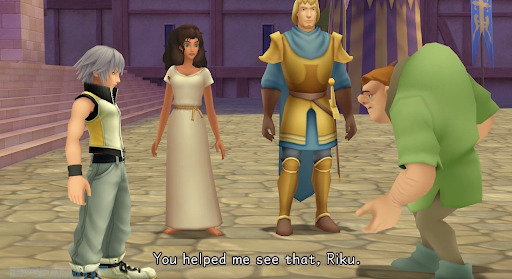
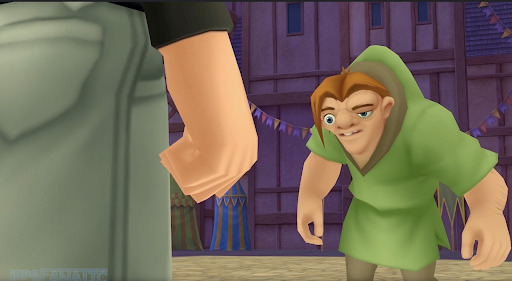
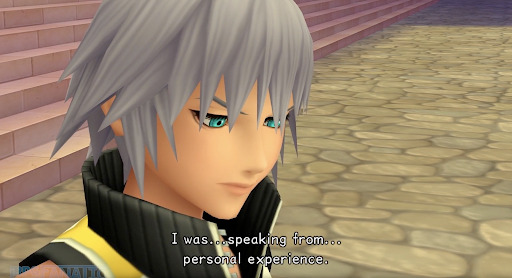
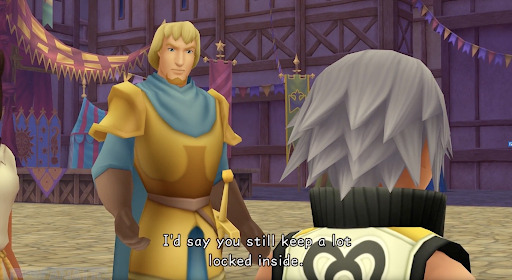






This scene is pretty much EXACTLY what I would do to say as explicitly as possible that Riku is gay without being able to say it outright due to censorship.
73 notes
·
View notes
Text
SQW 10 - Theme Voting Until Jan. 3rd

Event date voting has closed, and our 10th Swan Queen Week will take place from February 4th - February 10th with a little bit over 50% of the vote!
Additionally, theme suggestions are officially closed, and theme voting has begun! Please use this link to vote; do not sent your votes via ask/submission box/IM as those votes will not count.
Theme voting will be open from now until January 3rd. Below the cut is a list of the themes to choose from and important information about voting.
Voting is open to everyone, but please only vote once. Like the previous events, you can vote for your top three themes, but keep in mind that only one can win; you are voting for theme, not prompt. This means we will need to break the winning theme down into 7 smaller prompts. Once our theme is chosen, I will open the ask and submission boxes for prompt suggestions, and any prompts fitting the chosen theme can be submitted.
Please note, you may not see your suggestion exactly as you sent it; there were a number of very similar suggestions or very specific suggestions that I combined or slightly altered to make the most simple and clean list possible. There were also a few suggestions that were excluded as they had been previously used prompts or I deemed them a touch too explicit. When voting, be sure to look at the options carefully as there are several prompts that can fit different themes, so if there is one theme you really, really want, be strategic in your voting!
Suggested themes (If the prompt doesn’t have a name next to it, it was suggested anonymously):
Mythology; Gods and Goddesses, Saviors and Heroes. Greek, Roman, Vikings, Runes, Goddesses, etc.
Movies; Let’s all go to the movies Swan Queen style. Movie plots, movie genres.
5 + 1; The 5 times (?) and the one time (?). The 5 times Regina (?) Emma and the one time Emma (?) her, The 5 times Emma burned dinner and the one time she didn’t, The 5 times Regina slept alone, and the one time she didn’t, etc
Role Reversal; It’s like Trading Places (I’m showing my age) but with way more lesbian subtext. Emma as the mayor, Regina as the biological mother, Regina as the Savior, Emma as the Evil Queen, etc.
Seasons; Seasons One through Seven. Taking a prevalent Swan Queen related theme through out each season or have a specific prompt for each season. Day: 1, Plot Twist in Season 1, Day: 2 Canon Divergence in Season 2, Day 3: Alternate Storyline in Season 3, etc. Note: Each day would deal with a prompt se
Types/Stages of Relationships; Prompts dealing with different types or stages of relationships. First Date, Just Married, Polyamory, etc.
Free Themed; Prompts not centering around a central theme. This can literally be anything that you want.
Signs of Love; Prompts focusing on the different aspects of love. Trust, Support, Letting Go, Sacrifice, Little Moments, Domesticity, PDA, etc.
Tropes and Cliches; Prompts centering around favorite tropes and cliches. Belligerent Sexual Tension, One Note Cook, Blue Oni & Red Oni, etc.
Holidays and Vacations; Holidays and vacations featuring Swan Queen Goodness. Religious Holidays, Winter Break, Summer Holidays, St. Patrick’s Day, St. Valentine, etc.
Professionals; Our ladies in different professional environments. Doctors, Lawyers, Scientists, Writers, Teachers, Game Developers, etc.
Dreams; Prompts focusing on different types of dreams. Nightmares, Awkward Sex Dream, Deja-Vu, etc.
Social Media; Prompts centering around different aspects of social media. Twitter, Tumblr, Texting, Celebrities being reported on, etc. By: hermionethequeen
Coming Out; Prompts about coming out. Going Public, Telling the Folks, Being Outed, etc. by: hermionethequeen
Sexuality; Prompts focusing on different types of orientations. Homosexual, Bisexual, Demisexual, Asexual, etc.
Time; Time related prompts. Time travel, Historic, SQ through time, etc.
Locations; Prompts in our favorite settings. Neverland, EF, The Wish Realm, etc.
Useless Lesbians; Prompts about SwanQueen being all gay and weak. Pinning, Visible Thirst, etc. by: hermionethequeen
Fix-It; Fix-it prompts focused on rewriting SQ scenes. The First Meeting, What Should Have Happened When Emma Opened the Door in Her Panties, Everything in Season 5... just all of it, etc. Agathasajax and anon
SQ Playlist; A one shot based off a songs that remind us of SwanQueen. (Makeup Songs, Breakup Songs, etc) By: Carma-Jade
Partners; Prompts centering around SwanQueen Partnership. Good Cop, Bad Cop, Partners In Crime, etc. By: Carma-Jade
You can vote for your favorite three themes here. If you have any questions or concerns, don’t hesitate to let me know.
#SQW 10#swan queen#swanqueen#swan queen week#swanqueenweek#theme voting#event date announcment#mod post
62 notes
·
View notes